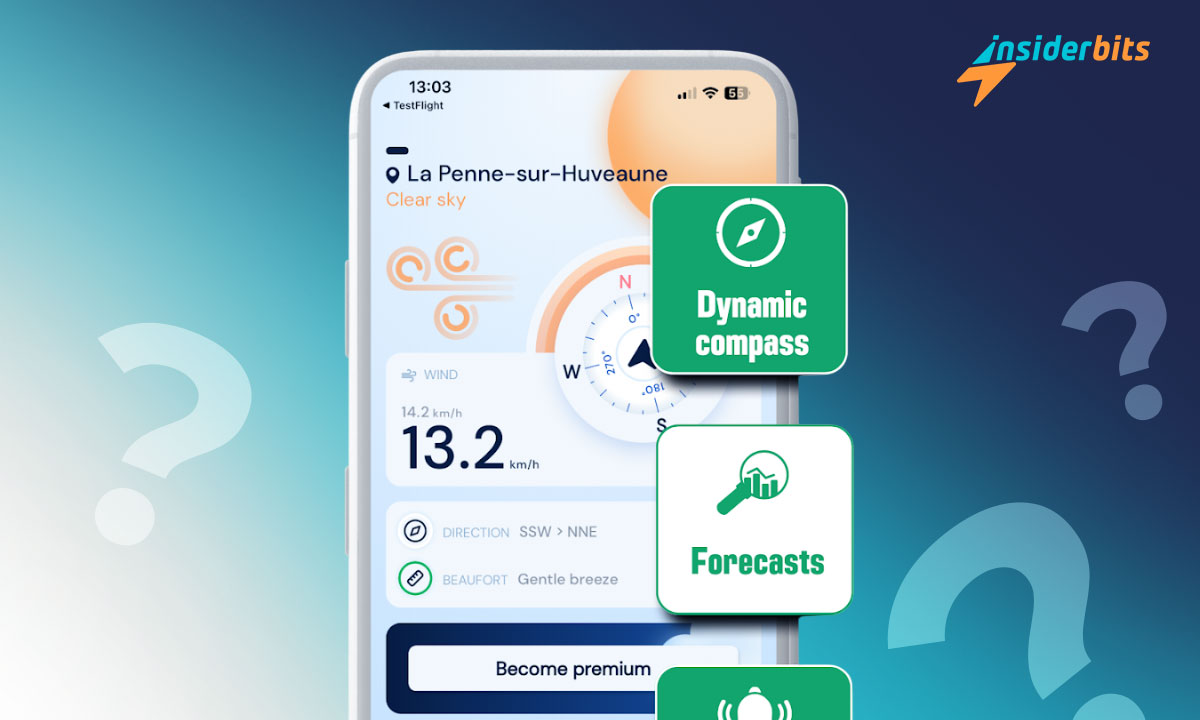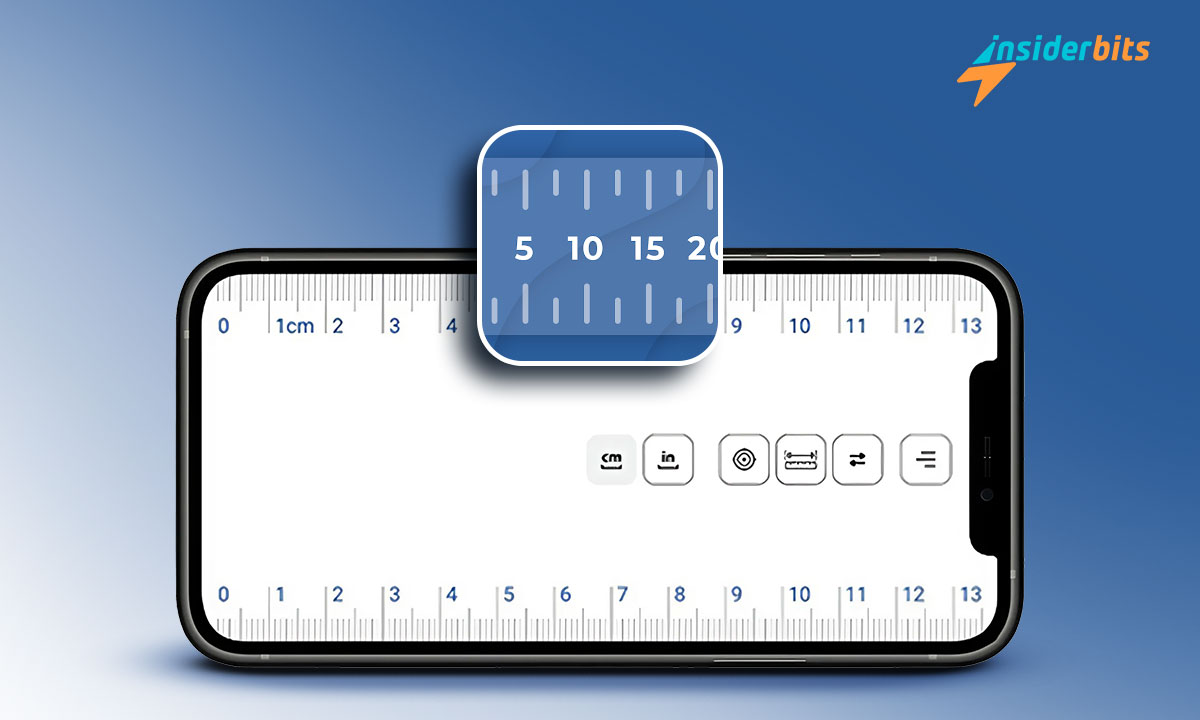The Anemometer – Wind Weather app provides users with a digital anemometer experience right on their smartphones, allowing for real-time wind speed measurements and weather updates.
Usually, outdoor enthusiasts, sailors, hikers, drone pilots, and construction workers are the people who need accurate wind readings to ensure safety and optimize their activities.
If you are still in doubt, read the article below to discover what a digital anemometer is, the best types available, the advantages of using a digital version, and the different types of anemometers on the market.
What is a Digital Anemometer?
A digital anemometer is an electronic device designed to measure wind speed and sometimes other meteorological parameters like temperature and humidity.
Unlike traditional mechanical anemometers that use moving parts to gauge wind speed, digital versions utilize sensors to provide precise readings displayed on an LCD screen.
This technology allows for quick and accurate measurements, making it ideal for various applications
Many digital anemometers offer multiple measurement units such as meters per second (m/s), kilometers per hour (km/h), and miles per hour (mph), catering to users’ preferences.
Additionally, some models include features like data logging and real-time graphs that help users analyze wind patterns over time.
To summarize, a digital anemometer is a versatile tool that focuses on showing individuals the weather conditions
4.7/5
What is the Most Accurate Type of Anemometer?
When it comes to accuracy in measuring wind speed, cup anemometers are often regarded as the most reliable type.
These devices consist of three or four cups mounted on horizontal arms that rotate as the wind blows. The speed at which the cups spin correlates directly with wind speed, allowing for precise measurements.
Cup anemometers are widely used in meteorological stations and research settings due to their high accuracy and durability under various environmental conditions.
If you are looking for another accurate option, you can check the hot-wire anemometer, which measures air velocity based on the cooling effect of airflow over a heated wire.
While hot-wire models can provide highly sensitive readings, they are typically more suited for laboratory settings or controlled environments rather than outdoor use.
Ultimately, while both cup and hot-wire anemometers excel in accuracy, cup anemometers remain the standard for general applications in meteorology.
What are the Advantages of Using a Digital Anemometer?
Using a digital anemometer comes with several advantages that enhance its functionality compared to traditional mechanical models.
First and foremost, digital anemometers provide instant readings displayed on easy-to-read LCD screens, allowing users to quickly assess wind conditions without interpreting mechanical dials or scales.
Another significant advantage is their ability to log data over time. With this feature, users can track changes in wind speed and analyze patterns that can inform future decisions regarding outdoor activities or projects.
Moreover, digital anemometers often come equipped with additional features like backlit displays for low-light conditions, maximum/minimum wind speed tracking, and even temperature readings.
What are the Four Types of Anemometers?
Cup Anemometers
These are the most recognized and considered the most accurate anemometer type due to their widespread use in meteorological stations. They consist of rotating cups that measure wind speed based on how fast they spin.
Vane Anemometers
Featuring a rotating blade or vane that aligns with the wind direction, these devices measure both wind speed and direction simultaneously. They are often used in HVAC systems.
Hot-Wire Anemometers
These devices utilize a thin wire heated by electric current; as air flows over it, the cooling effect allows for precise measurements of air velocity.
Digital Anemometers
Combining various technologies, digital models can measure wind speed using sensors and provide readings on LCD displays. They often include additional features like temperature measurement.
How to Use Anemometer – Wind Weather App?
Follow this short guide below to use this digital anemometer correctly.
- Download and Install: Get the app from your device’s app store and install it.
- Set Up Your Sensor: Connect any compatible external digital anemometer if you have one, following the app’s prompts.
- Configure Settings: Access the settings menu to customize measurement units for wind speed and temperature.
- Calibrate Your Anemometer: Calibrate your device for accurate readings, following specific instructions in the app.
- Monitor Wind Conditions: View real-time data on wind speed, direction, and temperature on the main screen.
- Set Alarms: Configure alarms to notify you when wind speeds exceed your specified threshold.
- Analyze Historical Data: Use the graphing feature to review historical wind data over different time frames.
4.7/5
Why Do You Need a Digital Anemometer? – Conclusion
In conclusion, digital anemometer apps offer a modern solution for anyone needing accurate wind measurements at their fingertips.
With the use of advanced technology found in digital anemometers, the Anemometer – Wind Weather provides real-time data essential for outdoor enthusiasts and professionals alike.
Now that you have read this article and understood what a digital anemometer is and can recognize its advantages over traditional models, you are ready to improve your experience when monitoring weather conditions.
관련: Learn How to Create Your Digital Signature Via App
이 글이 마음에 드셨나요? 인사이더비츠 블로그를 즐겨찾기에 추가하고 기술 등에 관한 새롭고 흥미로운 정보를 얻고 싶을 때마다 방문하세요.





